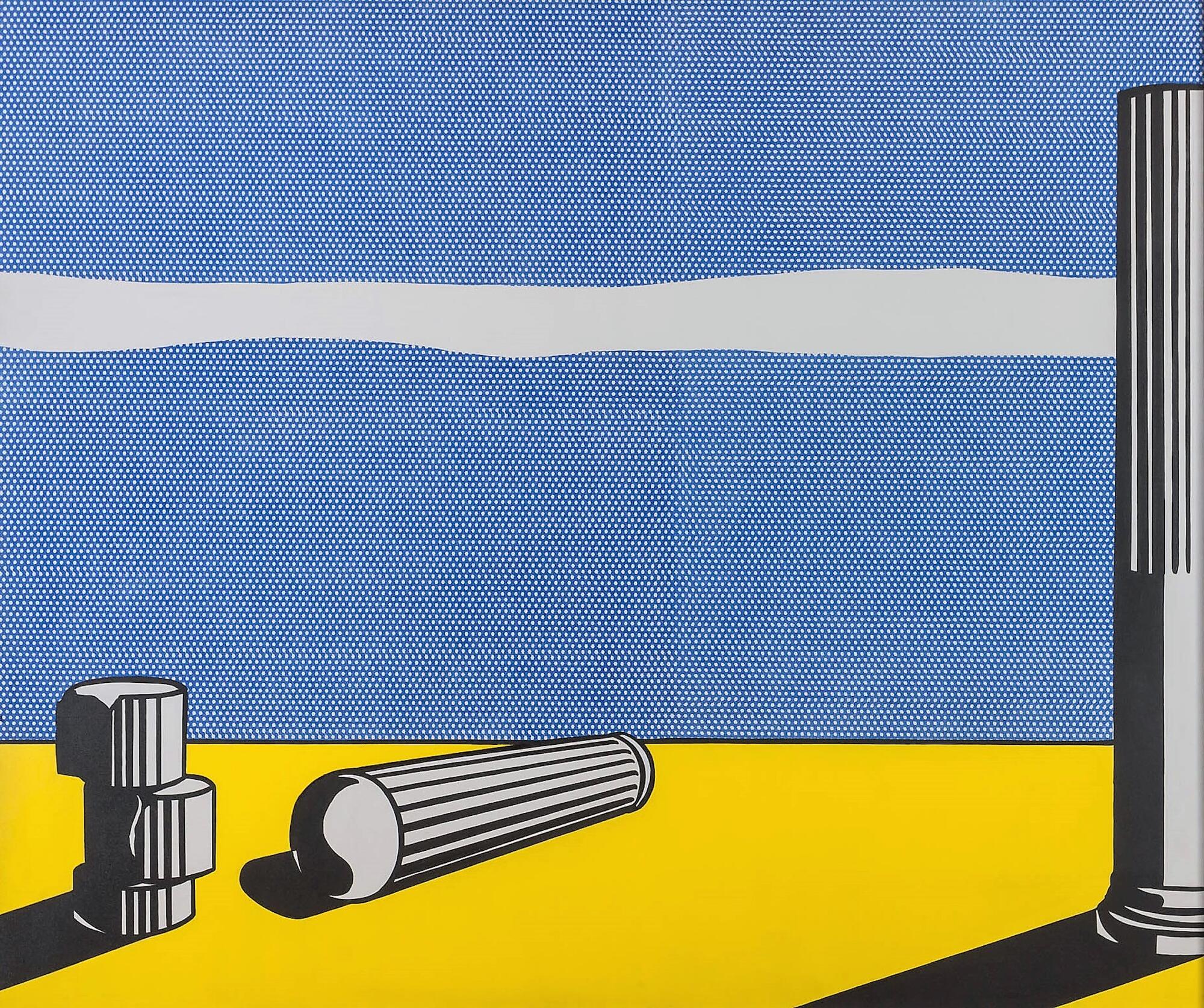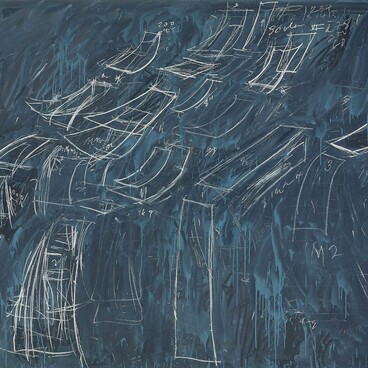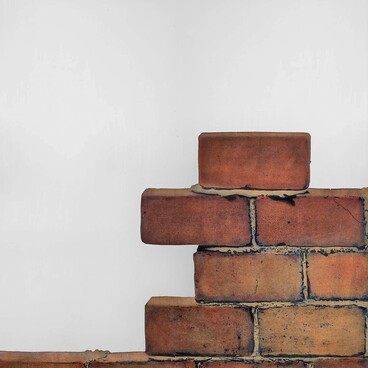Roy Lichtenstein was born in New York City in 1923. He attended public school until the age of twelve when he enrolled at the Franklin School for Boys in Manhattan. During that time, he first became interested in art and studied at the Art Students League of New York. Following his graduation from the Franklin School, Lichtenstein attended the Ohio State University in Columbus. In 1943, he was drafted and sent to Europe where he served until 1946. After his service, Lichtenstein returned to Ohio State where he finished his master’s degree and became a professor.
In 1951, Lichtenstein had his first solo exhibition at the Carlebach Gallery in New York. In the 1960s, after experimenting with the Abstract Expressionism style, he became one of the most prominent representatives of pop art.
Lichtenstein first became famous for his graphic reproductions of comic strips. This technique became the foundation of his artistic method. Lichtenstein painted pictures from comic strips and also reinterpreted many other images in his comic-based style, including photographs, illustrations from magazines, and even paintings by great Modernists such as Pablo Picasso, Paul Klee, and Joan Miró. Lichtenstein reimagined their works in the style of comic books by imitating a raster print.
In printing, halftone is a reprographic technique that uses dots. At a sufficient distance, the dots are seen as smooth tones and create a gradient-like effect. Usually, a halftone image has a grid-like structure. The darker the image, the larger the dots, and vice versa.
Lichtenstein would choose a small comic book picture or photograph, project a magnified image onto a canvas and work on it using a pencil or a brush until the result satisfied him.
“Ruins” is one of the early works by Lichtenstein. During that time, he did not consider himself famous yet and experimented with the new technique using various materials. The subject matter is the ruins of ancient columns which Lichtenstein reinterpreted in his recognizable style. By magnifying the columns and placing them in the context of comic books, the artist took away their symbolism and made them look like pieces of construction toys.
Over time, the artist began to pay more attention to artistic tools, such as imitating a large-scale printed raster, filling large areas with paint, and creating a precise geometry of volume. These techniques bring his figurative works that depict real objects closer to abstract art.
In 1951, Lichtenstein had his first solo exhibition at the Carlebach Gallery in New York. In the 1960s, after experimenting with the Abstract Expressionism style, he became one of the most prominent representatives of pop art.
Lichtenstein first became famous for his graphic reproductions of comic strips. This technique became the foundation of his artistic method. Lichtenstein painted pictures from comic strips and also reinterpreted many other images in his comic-based style, including photographs, illustrations from magazines, and even paintings by great Modernists such as Pablo Picasso, Paul Klee, and Joan Miró. Lichtenstein reimagined their works in the style of comic books by imitating a raster print.
In printing, halftone is a reprographic technique that uses dots. At a sufficient distance, the dots are seen as smooth tones and create a gradient-like effect. Usually, a halftone image has a grid-like structure. The darker the image, the larger the dots, and vice versa.
Lichtenstein would choose a small comic book picture or photograph, project a magnified image onto a canvas and work on it using a pencil or a brush until the result satisfied him.
“Ruins” is one of the early works by Lichtenstein. During that time, he did not consider himself famous yet and experimented with the new technique using various materials. The subject matter is the ruins of ancient columns which Lichtenstein reinterpreted in his recognizable style. By magnifying the columns and placing them in the context of comic books, the artist took away their symbolism and made them look like pieces of construction toys.
Over time, the artist began to pay more attention to artistic tools, such as imitating a large-scale printed raster, filling large areas with paint, and creating a precise geometry of volume. These techniques bring his figurative works that depict real objects closer to abstract art.



